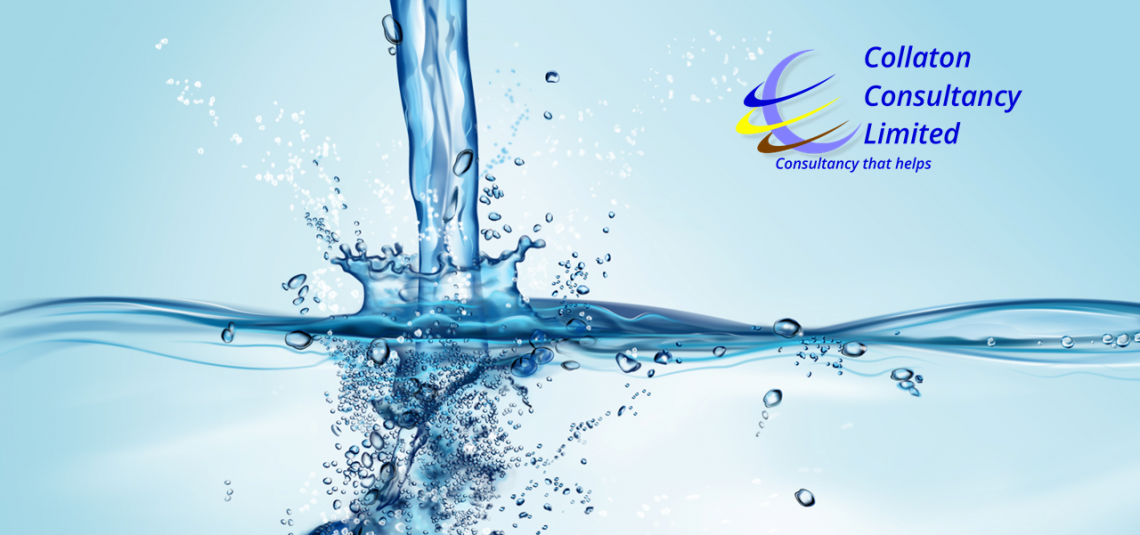Scheele, a Swedish chemist, is generally credited with discovering chlorine in 1774. During his experiments, he found that a solution of chlorine in water possessed definite bleaching properties.
Since the reaction between chlorine and water forms hydrochloric and hypochlorous acids, early textile bleaching experiments were not successful because of damaged cloth.
In 1798, Tennant of England prepared a solution of calcium hypochlorite by chlorinating a slurry of relatively inexpensive lime. The following year he patented a process for the manufacture of bleaching powder where chlorine gas was absorbed in a dry lime hydrate.
Labarraque succeeded, in 1820, in preparing sodium hypochlorite by chlorinating a solution of caustic soda.
Chlorine, as well as being a biocide, oxidizes and eliminates organic compounds and converts some soluble metallic impurities into insoluble solids that can be removed by filtration.
Chlorine reacts with water forming hypochlorous acid (HOCl). In alkali solutions hypochlorous acid dissociates forming hypochlorite. Chlorine, hypochlorous acid and hypochlorite exist together in equilibrium.
Cl2 + H2O > HOCl > OCl
Increasing pH →
Below pH 2 the equilibrium favours chlorine. Between pH 2 and 7.4 hypochlorous acid predominates and above pH 7.4 hypochlorite predominates. Hypochlorous acid is a significantly more powerful oxidizer and disinfectant than hypochlorite. Best biological control is achieved in the pH range of 5 to 7 where hypochlorous acid is predominate.
The molecular formula for sodium hypochlorite is NaOCl. The most common method for producing sodium hypochlorite is to react chlorine with sodium hydroxide (NaOH).
The stability and shelf life of a hypochlorite solution depends on five major factors
- Hypochlorite concentration.
- pH of the solution.
- Temperature of the solution.
- Concentration of certain impurities which catalyse decomposition.
- Exposure to light.
Low concentration hypochlorite solutions decompose slower than high concentration hypochlorite solutions.
Fifteen weight percent sodium hypochlorite will decompose approximately 10 times faster than 5 wt% sodium hypochlorite at 25°C
The pH has a significant effect on the stability of sodium hypochlorite solutions. Below pH 11 the decomposition of sodium hypochlorite is significant due to the shift in the equilibrium in favour of the more reactive hypochlorous acid. A pH between 12 and 13 gives the most stable solution.
Sodium hypochlorite solutions will freeze at different temperatures depending on the concentration of the solution. Thirteen wt% sodium hypochlorite freezes at -22.5°C compared to 6 wt% sodium hypochlorite which freezes at -7.5°C
Chlorine is the standard against which oxidizers are compared.
The term “available chlorine” refers to the amount of chlorine equivalent in oxidizing power. It is a measure of strength and is used to express the concentration of bleach solutions. Available chlorine is usually expressed as grams per litre (gpl) or weight percent (wt%). The strength of hypochlorite solutions may also be expressed as wt% sodium hypochlorite.

The following materials are compatible with sodium hypochlorite solutions or as linings for non-compatible materials. Some may not be suitable for use in processes that manufacture sodium hypochlorite.
- PVDF (polyvinylidene fluoride)
- PTFE (polytetrafluoroethylene)
- Titanium (Warning: titanium must not be used in contact with dry chlorine)
- Ethylene propylene rubber
- EPDM rubber (ethylene propylene
- diene monomer rubber)
- Chlorobutylene Rubber
- Polypropylene
- PVC (polyvinyl chloride)
- CPVC (chlorinated polyvinyl chloride)
- Tantalum
- Viton A with a minimum durometer (hardness) of 70
- FRP
Recently, scientists have studied how chlorine affects the cell walls of “gram-negative” bacteria, organisms including those causing typhoid fever, dysentery, cholera and Legionnaires’ disease
Gram-negative bacteria possess cell walls that consist of an outer membrane and a cytoplasmic membrane. The outer membrane, being the outermost region that has direct contact with the organism’s environment, functions as a protective barrier. The investigation revealed that, for each bacterial species, chlorination significantly increased the permeability of the outer membrane, leaving the bacterium vulnerable to destruction.
The total amount of chlorine which will react both with compounds like iron and manganese and with organics and ammonia is referred to as the chlorine demand. The chlorine demand of different waters can vary widely. Chlorine demand is therefore the difference between the amount of chlorine added to the water (the chlorine dose) and the free chlorine detectable in the water.
Although chlorine itself can give rise to problems of taste and odour, chlorination can also help to improve taste and odour by the reduction of organic materials and iron.
If you need help understanding water treatment, Legionella or Pseudomonas, why not contact Collaton Consultancy Limited on general@collatonconsutancy.com to discuss your needs.



